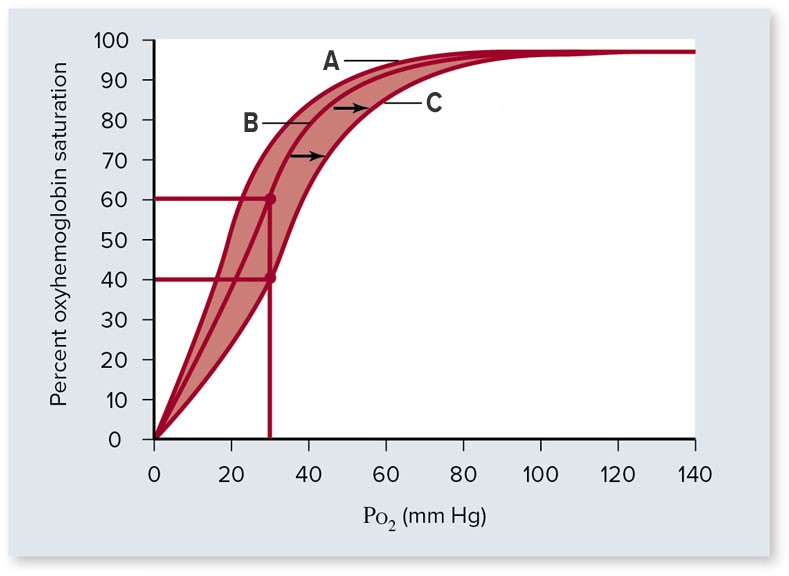 In the above graph, curve ________ is most likely the oxygen-binding curve for normal adult human hemoglobin, curve ________ is most likely that of llama hemoglobin (from a llama population that has lived in the mountains of Peru for thousands of years), and curve ________ is most likely that of myoglobin.
In the above graph, curve ________ is most likely the oxygen-binding curve for normal adult human hemoglobin, curve ________ is most likely that of llama hemoglobin (from a llama population that has lived in the mountains of Peru for thousands of years), and curve ________ is most likely that of myoglobin.
A. C, B, A
B. A, C, B
C. A, B, C
D. B, C, A
E. B, A, C
Answer: A
You might also like to view...
Mature human sperm and ova are similar in that they _____
A) both have the same number of chromosomes B) are approximately the same size C) each have a flagellum that provides motility D) are produced from puberty until death E) are formed before birth
C3 plants are more susceptible to photorespiration than either C4 or CAM plants, so why do most
plants lack the C4 pathway?
a. Rubisco is more efficient in C3 plants when compared to rubisco C4 and CAM plants. b. Photorespiration is not a serious problem for most plants. c. Most plant species do not have vacuoles in their cells to store the malate generated from CO2 taken in during the night. d. There is an energetic cost to C4 and CAM pathways that only makes them advantageous in very hot and/or arid environments. e. Switching between C3, C4, and CAM photosynthesis is very difficult for most plants.
Medicinal chemists that synthesize drugs to kill pathogenic protozoans aim to target a novel mechanism to promote selective toxicity. The reason there are fewer antiprotozoal drugs compared to antibacterials is that ________.
A. there are few novel molecular mechanisms in protozoa compared to human hosts since both are eukaryotes, so toxicity is an issue B. protozoans are not pathogenic compared to bacteria so developing drugs is not cost-effective C. most antiprotozoal drugs also kill bacteria so they are not given their own category D. targeting novel mechanisms in protozoans is far more costly than it is for bacterial cells
The first cells were autrophs, Indicate whether the statement is true or false